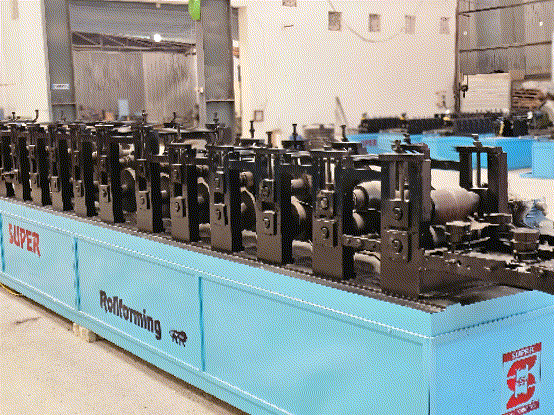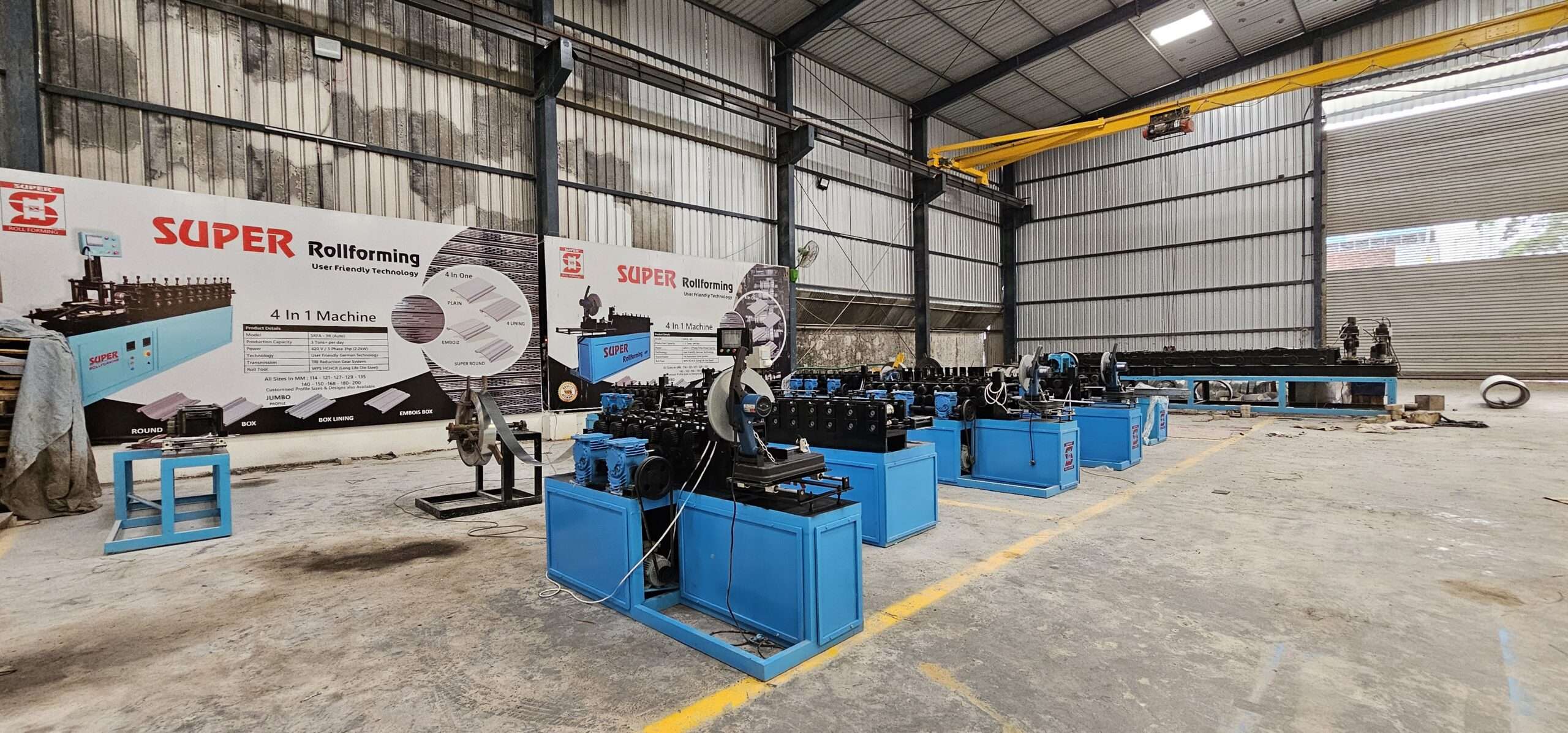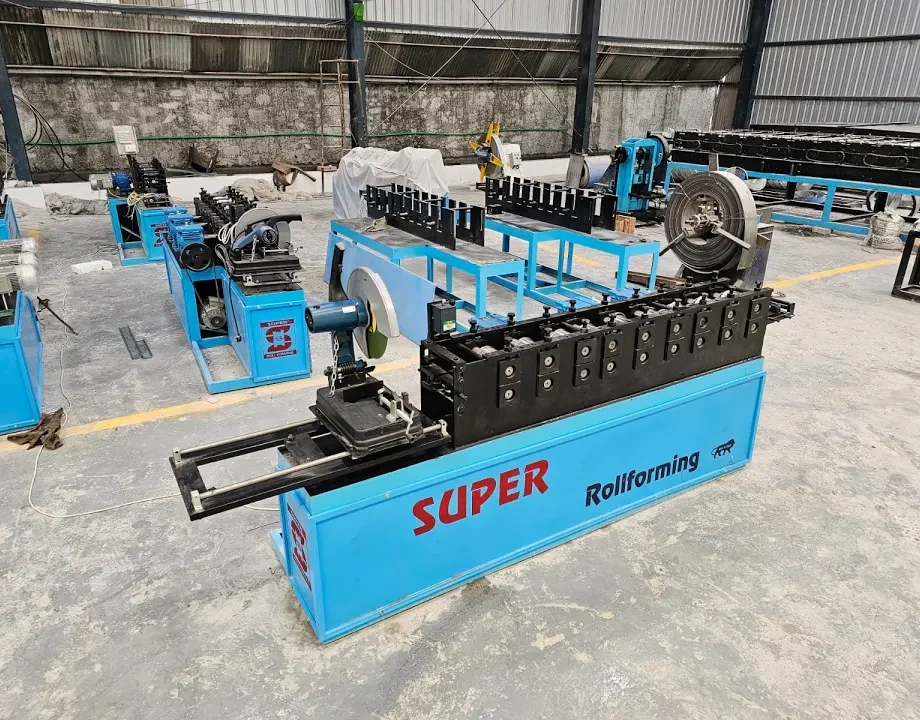Introduction
In the world of Manufacturing, Evolution is not just a concept; it’s a way of life. One process that continues to shape industries with its innovation and versatility is roll forming. Picture a metal sheet smoothly flowing through a series of precisely positioned rollers, gradually transforming into complex profiles with unmatched precision and efficiency. Indeed, roll forming is not merely a production method; it’s an art form that breathes life into countless sectors, from automotive and construction to aerospace and beyond. As we immerse ourselves in the realm of revolutionizing industries, the intricate dance of metal shaping through roll forming mesmerises us with its endless possibilities. This blog post delves deep into the heartbeat of modern manufacturing, dissecting the current trends that propel the roll forming industry to new heights of ingenuity and productivity. Join us on this captivating journey as we unravel the secrets behind the seamless synergy of technology, creativity, and demand that define the dynamic landscape where roll forming reigns supreme.
Evolution of Roll Forming Industry
In today’s dynamic landscape, roll forming has emerged as a revolutionary process, transforming industries across the board. From automotive to construction and beyond, the application of roll forming technology is reshaping the way products are manufactured, offering unparalleled efficiency and precision.
In the automotive sector, roll forming has become a cornerstone of production processes, allowing for the creation of complex and lightweight components with exceptional strength. By utilising roll forming techniques, manufacturers can achieve cost-effectiveness without compromising on quality, meeting the demands of modern vehicle design and performance standards.
In the construction industry, roll forming has opened up a world of possibilities in designing and producing structural elements and building components. Whether it’s roofing panels, wall studs, or window frames, roll forming enables the seamless production of customized, high-quality products that are both durable and aesthetically pleasing.
The aerospace sector has also witnessed the transformative power of roll forming, with aircraft manufacturers leveraging this technology to fabricate intricate and lightweight parts essential for modern aircraft design. By utilizing roll forming processes, aerospace companies can maintain stringent quality standards while optimizing production efficiency and reducing material waste.
Moreover, the renewable energy industry has embraced roll forming as a key manufacturing solution for producing solar panel frames, wind turbine components, and other renewable energy infrastructure. The precision and scalability offered by roll forming technology make it an ideal choice for meeting the growing demand for sustainable energy solutions globally.
In essence, roll forming technology is revolutionizing industries by streamlining production processes, enhancing product quality, and driving innovation across diverse sectors. As we delve deeper into exploring current trends in roll forming, it becomes evident that this versatile manufacturing technique is not just a trend but a fundamental pillar of modern industrial manufacturing.
Sustainability and Environment Impact:
In the manufacturing sector, roll forming machines are essential for encouraging sustainability and minimizing environmental effect. By precisely moulding metal strips into precise profiles, Roll Forming reduces material waste, in contrast to traditional production procedures that produce large amounts of waste. Furthermore, roll forming uses less energy than alternative techniques, which lowers carbon emissions and promotes environmental sustainability in general.
Customization and Design Flexibility:
Roll forming Machines are famous for their exceptional customization and design flexibility. These devices can create a large range of complexly shaped and dimensioned profiles, satisfying the various demands of many sectors. Roll forming machines provide unmatched design adaptability for manufacturing specialised components for consumer products, automotive, and construction, enabling producers to realise their own visions.
Advancements in Material Selection:
Roll forming technology is evolving as a result of the ongoing changes in material selection. A wide variety of materials, such as aluminium alloys, sophisticated composites, and high-strength steels, are now available to manufacturers. These materials are perfect for a variety of applications because of their exceptional strength, resilience to corrosion, and longevity. Roll forming machines can manufacture high-quality goods that satisfy the highest industry standards by utilizing these developments.
Cost Effectiveness and Efficiency:
Roll forming machines are well known for being affordable and productive during the production process. When compared to conventional manufacturing techniques, these machines provide significant cost savings by reducing material waste and increasing production speeds. Roll forming is a recommended option for companies aiming to optimize their operations and improve profitability since it can also create huge quantities of components with little labour input, thereby enhancing efficiency and productivity.
Challenges and Future Outlook:
Despite its numerous benefits, roll forming faces several challenges in the ever-evolving manufacturing landscape. Market competition, technological advancements, and changing consumer demands pose ongoing challenges for manufacturers. However, with proactive measures such as investing in research and development, embracing innovation, and adopting new technologies, the future outlook for roll forming remains promising.
Innovation on the Horizon: What the Future Holds for Roll Forming:
Roll forming has a bright future full of technology improvements and innovation. The sector is changing as a result of emerging technologies including automation, computerisation, which offer increased scalability, accuracy, and efficiency. These developments have the potential to completely alter how roll forming machines function, resulting in quicker production cycles, better-quality output, and greater sustainability.
Advantages of Roll Forming in Modern Industries:
Many benefits are available for roll forming machines in modern industry. Roll forming is essential to the production of many different things, ranging from appliances and furniture to automobiles and construction. For companies trying to remain competitive in today’s market, its capacity to create intricate forms, affordability, and sustainability make it an excellent choice.
Aerospace Applications: Pushing Boundaries with Roll Formed Profile:
Roll forming machines are pushing the envelope of what’s possible in the aerospace industry. The best quality components are required for aerospace applications due to their strict specifications regarding strength, quality, and durability. The best option is to use roll formed profiles, which provide parts that are both strong and lightweight and satisfy the exacting requirements of the aerospace sector. Aerospace technology advances greatly through the utilization of roll forming in everything from wing structures to fuselage panels.
Conclusion: The Endless possibilities of Roll Forming in Revolutionizing Industries
In conclusion, the manufacturing industry has seen a revolutionary shift due to the sustainability, customization, efficiency, and innovation of roll forming machines. Roll forming has countless opportunities for transforming industries, from conserving resources to pushing the limits of design and technology. Roll forming will be essential in promoting sustainability, efficiency, and innovation in a variety of industries going forward, influencing the manufacturing landscape for future generations.




